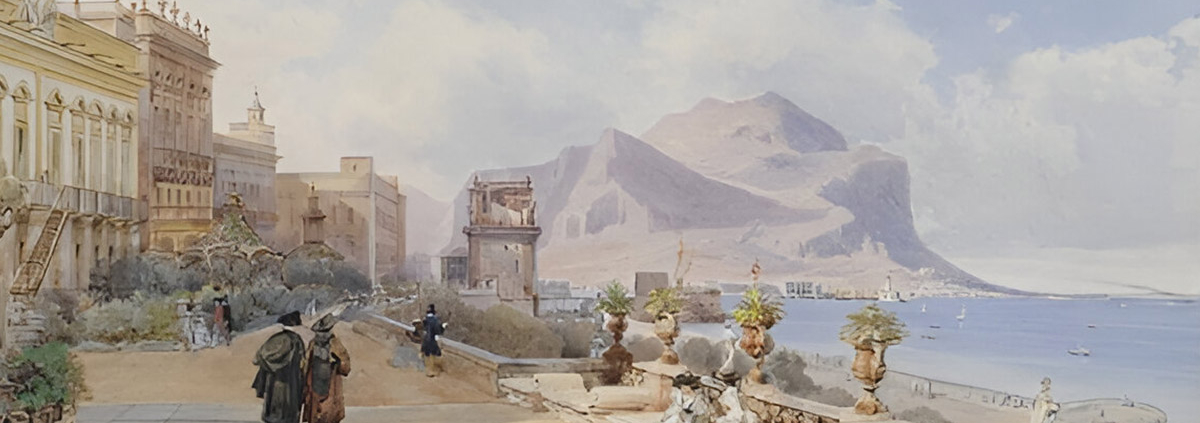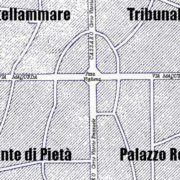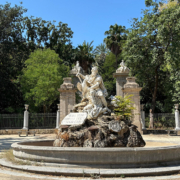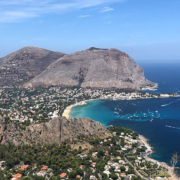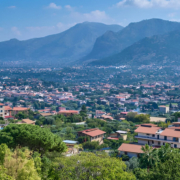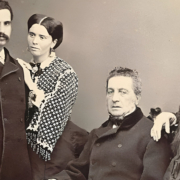The Ancient Walls of Palermo
The Ancient Walls of Palermo: History, Divisions, and Iconic Architecture
Palermo, with its long and complex history, is a city that has undergone many transformations, reflecting the diverse cultures and civilizations that have ruled it. One of the most fascinating aspects of Palermo’s urban history is its ancient walls, which not only defined the city’s perimeter but also established its social and defensive structure. In this article, we will explore the history of Palermo’s ancient walls, the division of the city at the Quattro Canti, the ancient gates, and other significant architectural elements such as the Mura delle Cattive.
The Ancient Walls: Defense and City Identity
Palermo’s walls have ancient origins, dating back to the Punic era, and were later expanded and fortified by the Romans, Byzantines, and subsequently the Normans and Aragonese. These walls, which surrounded the entire city, served not only as defense against external attacks but also as a means of controlling access to the city itself.
The original Punic walls were built by the Phoenicians in the 7th century BC when Palermo (then called “Zyz”) was one of the most important cities in the Mediterranean. These walls marked the perimeter of the ancient Phoenician city, which largely corresponds to today’s historic center.
With the arrival of the Romans, the walls were strengthened and adapted to new defensive needs. However, it was during the Norman period that Palermo’s walls reached their peak in grandeur and extent. The Normans, under the leadership of Roger II, built new bastions and towers, giving the city the appearance of an impenetrable fortress.
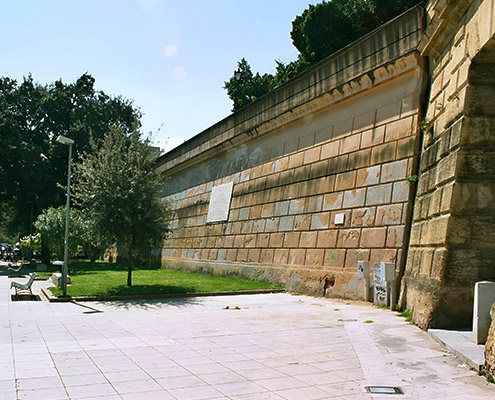
The Division of the City: The Quattro Canti and the Heart of Palermo
The division of the city into the Quattro Canti is one of the most characteristic and symbolic elements of Palermo. The Quattro Canti, or Piazza Vigliena, is located at the intersection of Via Maqueda and the Cassaro (today’s Corso Vittorio Emanuele), the city’s two main arteries, and represents the geometric and symbolic center of the historic city.
The square was created in the 17th century during the Spanish period when the Viceroy of Sicily decided to modernize the city’s urban layout. The Quattro Canti consists of four concave buildings, each representing one of the four seasons and one of the city’s four main churches. Each corner of the square is decorated with statues depicting the patron saints of Palermo: Saint Agatha, Saint Cristina, Saint Ninfa, and Saint Oliva.
This division into the Quattro Canti reflected not only an ideal of order and beauty but also a precise social and political organization of the city. Each of the four districts, or mandamenti, had its own identity and autonomy while being an integral part of the city as a whole.
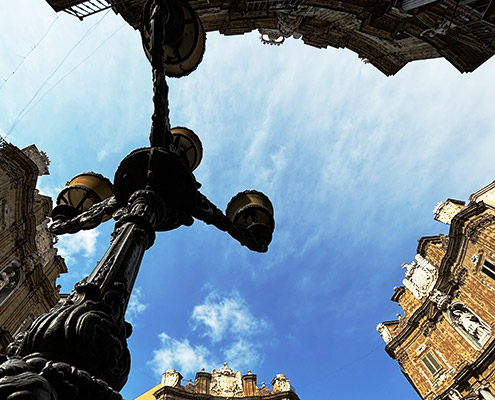
The Ancient Gates of Palermo
The ancient walls of Palermo were equipped with numerous gates that served as the main entrances to the city. These gates were not just simple passageways but monumental structures that symbolized the majesty and importance of the city. Here are some of the most important ones:
- Porta Nuova: Built in 1583 to commemorate the visit of King Philip II of Spain, Porta Nuova is perhaps the most monumental of Palermo’s gates. Located near the Palazzo dei Normanni, this gate marks the boundary between the historic center and the Albergheria district. Its imposing architecture, adorned with decorations depicting military victories, symbolized the city’s power and glory under Spanish rule.
- Porta Felice: Located at the end of the Cassaro, Porta Felice was begun in 1582 at the behest of Viceroy Marcantonio Colonna and completed in the early 17th century. The gate, which faces the Foro Italico, serves as a majestic entrance to the historic center from the seaside. Its strategic position made it a symbol of openness to the Mediterranean and a welcoming point for those arriving from the sea.
- Porta Sant’Agata: This gate, of which few traces remain today, was located along the ancient route that connected the city to the sea through the Albergheria district. It was one of the oldest gates and took its name from a nearby church dedicated to Saint Agatha.
- Porta Termini: Situated along the road leading to Termini Imerese, this gate marked the eastern exit from the city. Although it no longer exists, Porta Termini was an important passage for those traveling to the eastern countryside of Palermo.
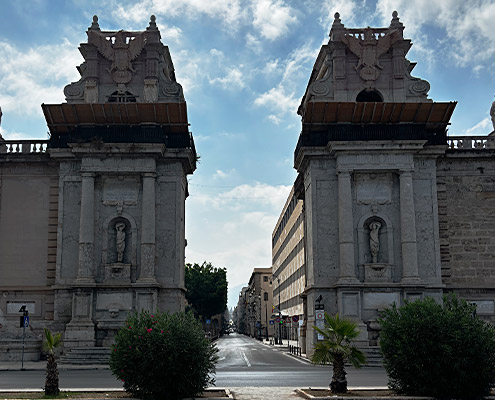
The Mura delle Cattive: A Historical Symbol
The Mura delle Cattive is a very unique and fascinating architectural feature of the city. It is an elevated, covered walkway located along the ancient walls, originally reserved for widows and noblewomen who, according to tradition, were not allowed to participate in the social life of the city. From here, the “cattive” (from the Sicilian term meaning “widows”) could observe the city and the sea without being seen. In the past, there were also rumors and gossip that called into question the integrity of these women, fueling the hypothesis that they might have provided certain “services.”
The Mura delle Cattive is located near Porta Felice and overlooks the Foro Italico, offering a breathtaking panoramic view of Palermo’s gulf. This walkway is rich in history and symbolism, reflecting the rigid social conventions of the time and the condition of women in a strongly patriarchal society.
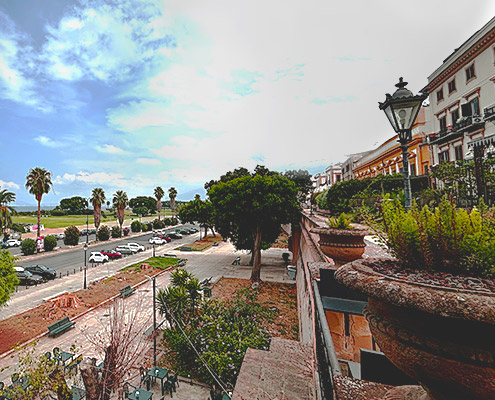
The Evolution of the Walls and the Decline of Fortifications
Over the centuries and with the evolution of warfare techniques, Palermo’s walls gradually lost their defensive function. By the 18th century, with the advent of modern artillery, the walls began to be seen more as a barrier to urban development than as protection.
In the 19th century, as the city expanded and needed new spaces, many parts of the ancient walls were demolished. However, some sections of the walls and ancient gates have been preserved and restored, becoming an integral part of Palermo’s historical and cultural heritage.
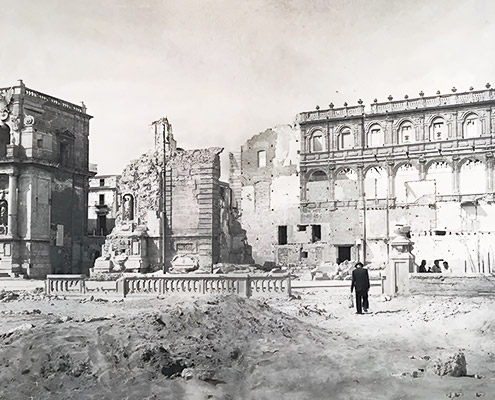
Conclusion
The ancient walls of Palermo, its monumental gates, and the division into the Quattro Canti are not just architectural elements but true witnesses to the city’s history. These symbols of defense, power, and social organization tell the story of a city that has been at the heart of the Mediterranean for centuries, a city that has withstood sieges and dominations while always maintaining its identity.
Today, exploring these places means taking a journey through time, immersing oneself in Palermo’s history, and discovering the roots of a city that, despite the transformations and challenges of the past, continues to shine as one of the pearls of the Mediterranean.

